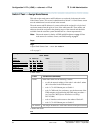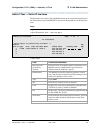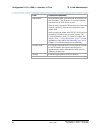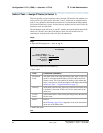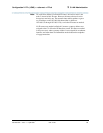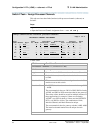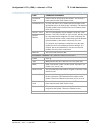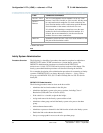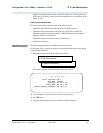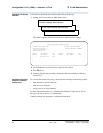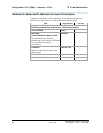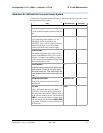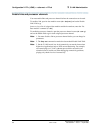
Configuration 2: R7r (+CMS) <—ethernet—> R7csi 3 C-LAN Administration
Administration for Network Connectivity
CID: 77730 555-233-504 — Issue 1 — April 2000
92
> Submit the screen
End
Intuity System Administration
Procedure Overview The following is a checklist of procedures that must be completed to administer a
DEFINITY ECS with a TCP/IP connection to a Lucent Intuity system. The
DEFINITY administration procedures are described in DEFINITY ECS
Administrator’s Guide, 555-233-502 and in previous sections of this chapter. The
Intuity system administration procedures are describe following the checklist.
For a complete description of the administration procedures for connecting an Intuity
system to a DEFINTIY ECS, see Intuity Messaging Solutions — Using a LAN to
Integrate with DEFINTIY ECS, 585-313-602 for Intuity R4.4 or 585-313-604 for
Intuity R5.
DEFINITY ECS administration
The following procedures must be done on the host switch:
• Administer the local node number in the dial plan.
• Administer the Intuity system voice ports as stations, including Class of
Restriction (COR) and Class of Service (COS).
• If the switch is a csi model, assign the bus bridge.
• Assign node names for the Intuity system and the switch.
• Administer a hunt group, and add the Intuity system voice ports to that hunt
group.
• Add an ethernet data module.
• Administer a processor channel for the link from the switch to the Intuity system.
• Enable the link on the ethernet data module.
• Set up a coverage path for access to the voice port hunt group.
Session - Local The Local and Remote Session numbers can be any value
between 1 and 256 (si model) or 384 (r model), but they must
be consistent between endpoints. For each connection, the
Local Session number on this switch must equal the Remote
Session number on the remote switch and vice versa.
It is allowed, and sometimes convenient, to use the same
number for the Local and Remote Session numbers. It is
allowed, but not recommended, to use the same Session
numbers for two or more connections.
Session -
Remote
Mach ID Destination switch ID. This is the Local Node Number on the
dial plan of the destination switch.
Field Conditions/Comments
3 of 3



